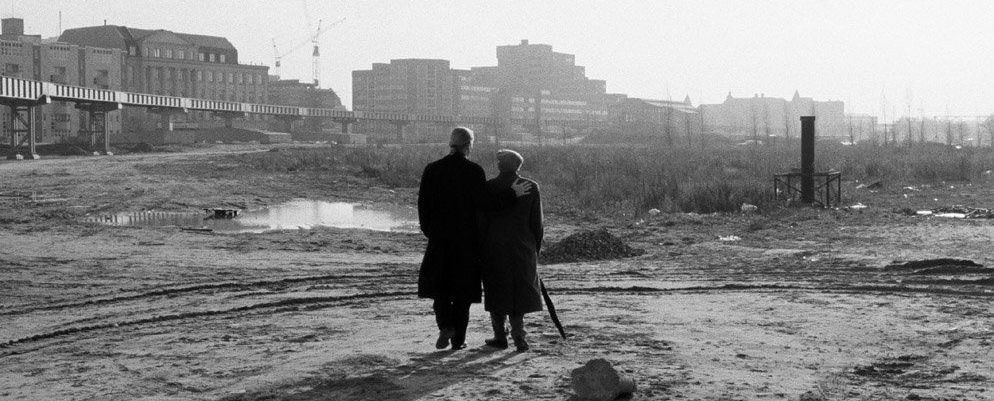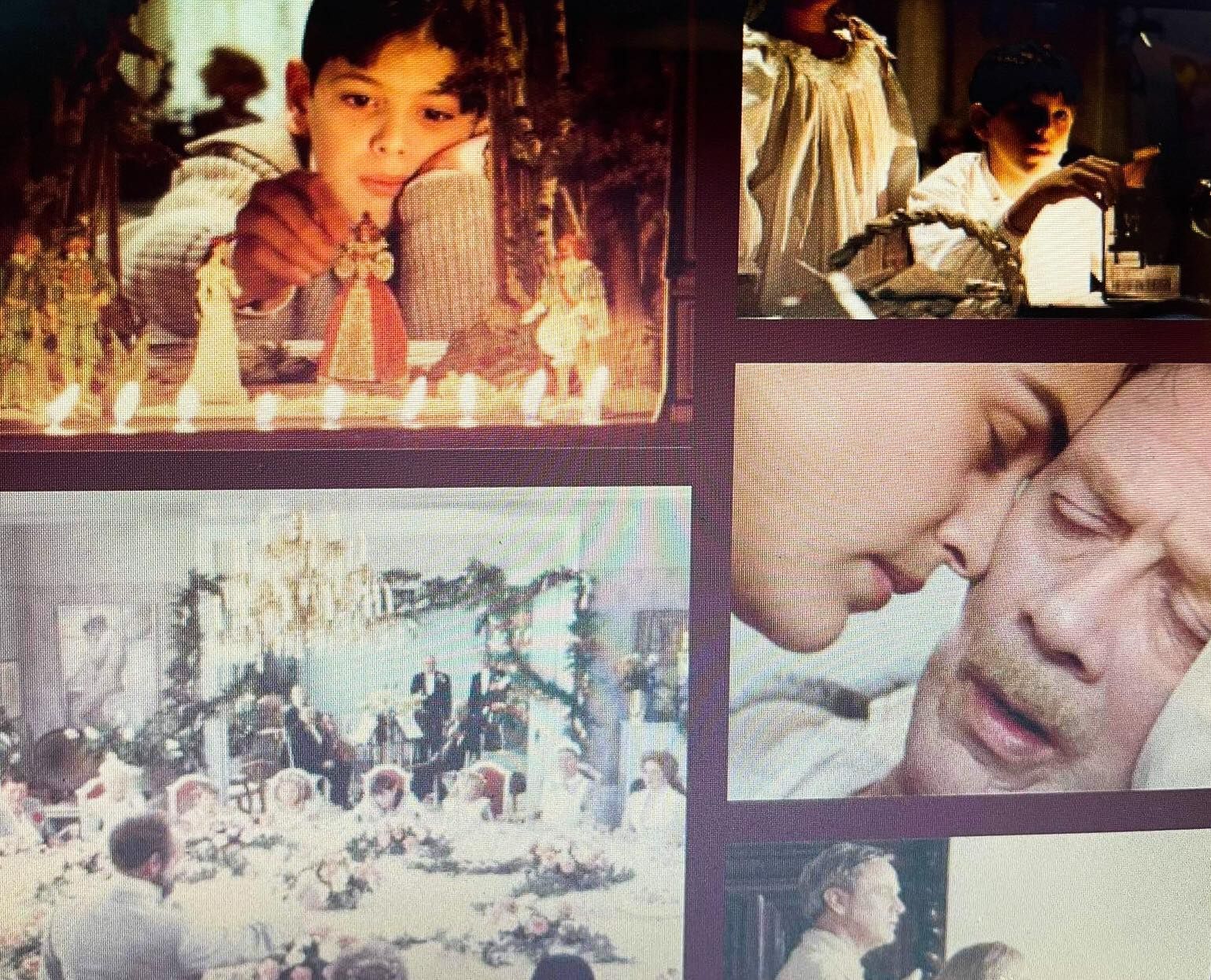The Sky Above Berlin
Wim Wenders is the magician of some wonderful road movies such as "Paris Texas" and was inspired to make this artistic black and white classic in 1987 by the then still divided city of Berlin. It is important to emphasize at the outset that he worked with Peter Handke. And Wenders is first and foremost fascinated by places: he is a wanderer and explorer of images, of architecture as a topoi of concentration and introspection. "For me, films begin with a place. 'Wings of Desire' began with the desire to shoot in Berlin and in Germany. For me, the stories and places are inseparably linked. I have only made a film based on a story once. That was a fiasco."

The Potsdamer Platz from the film, the no man's land of yesterday, is today one of the lost places - completely changed like hardly any other place in Berlin.
Curt Bois, on the other hand, has been forgotten by the city: his gravestone in Wilmersdorf was removed years ago, no street, no square, no place anywhere commemorates him.
Wenders and Handke based the film on a kind of film poem.
“When the child was a child,
it was the time for the following questions:
Why am I me and why not you?
Why am I here and why not there?
When did time begin and where does space end?
Isn’t life under the sun just a dream?”
(Excerpt from "The Song of Childhood" by Handke)
murmurs angel Damiel, played by Bruno Ganz, as he wanders through the streets of Berlin, accompanied by angel Cassiel (Otto Sanders), listening to the thoughts and snippets of conversation of mortals and longing with increasing curiosity for an earthly existence, feeling their passions, longings, sorrow and pain ever more empathetically. He finally falls in love with the floating acrobat Marion in a small circus and exchanges his spiritual existence for an earthly one - from this point on, color comes into the images. But that is not the story of the film, because this film has no story. It is more an exploration of the places of this city and its history. A wandering around in rooms, an exploration of urbanity.
Tribute to Curt Bois
An important reference person and at the same time a homage to the great actor Curt Bois is his portrayal of the role of the aged Homer. Curt Bois, born in Berlin in 1901, became a child star in Berlin in 1908 (as the singing Heinerle in the operetta "Der fidele Bauer") and later a crowd favorite in Berlin cabarets and variety shows, with chansons by Friedrich Hollaender and in productions by Max Reinhard, Erwin Piscator, Heinz Hilpert and Victor Barnowsky. He had to flee from the Nazis in 1933 and managed to get supporting roles in Hollywood. When he returned to Germany in 1950 - the Cold War was already underway - he met Bertolt Brecht in East Berlin, who cast him in the leading role of Puntila ("Mr. Puntila and his servant Matti") and he played Gogol's Inspector General for Wolfgang Langhoff. After moving to the West in 1953, he appeared in plays by Shakespeare and Moliere under the direction of Fritz Kortner (because Bois had previously acted in the East, he was boycotted in the West).
Curt Bois is Homer, the aged narrator who can no longer find Potsdamer Platz in divided Berlin (a huge wasteland, no man's land instead, see photo 1), and who later researches lost places in the Berlin State Library on the edge of Potsdamer Platz in order to bring them to life with his stories up to the year 33. The architecture of the State Library is animated by the thoughts of the visitors as whispers. The way Wenders explores the architecture of the rooms - with floating tracking shots - is magnificent in terms of film aesthetics (later in Peter Greenaway's "The Cook, the Thief, His Wife and Her Lover" I saw similarly exciting camera work). And paradoxically, Potsdamer Platz from the film, the no man's land yesterday, is now one of the lost places - completely changed like hardly any other place in Berlin. Curt Bois, on the other hand, has been forgotten by the city: his gravestone in Wilmersdorf was cleared years ago, no street, no square, no place anywhere reminds us of him.
Columbo alias Peter FalkAnother important reference person in the film is Peter Falk, who plays himself as the famous actor of Columbo and is in Berlin filming a film about the Nazi era. And: Falk is also a former angel who preferred earthly existence.The historical topos, the Nazi era, is translated into film in an almost spooky way. During taxi rides through the streets, Falk has the invisible Cassiel at his side, and you suddenly find yourself in the catacombs of Berlin with smoking Wehrmacht officers and waiting women and children in bunkers, murmuring thoughts and playing. Documentary images of destruction are shown, images from the post-war period, in color. Anyone who builds bunkers and throws bombs remains standing at the facade of a ruin.
This is what Berlin was like in the 1980s. The live music in the film is also top-notch: it shows Wim Wenders' penchant for composing different art forms in film and his love of popular music. The artist Marion (Engel Damiel's love) goes to a concert by Nick Cave and the Bad Seeds and the bands Crime and The City Solution. I saw the film in Dresden around 1990/91, the time of the fall of the Berlin Wall, and I can only say: that was simply the sound of that time, musically and atmospherically. So brilliantly captured in this film.





